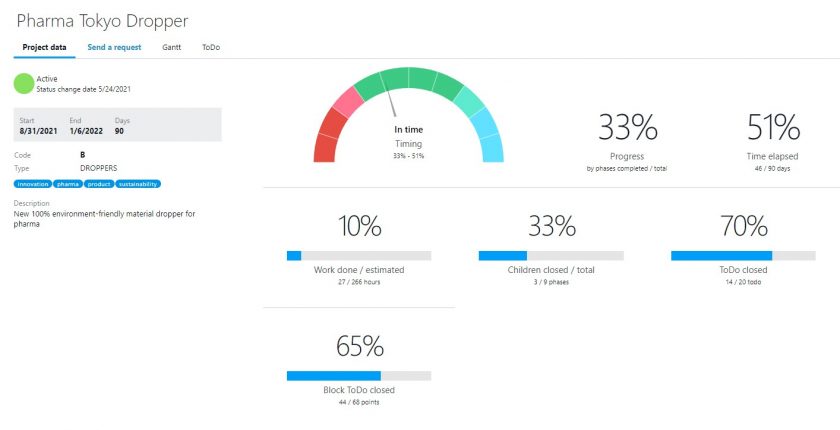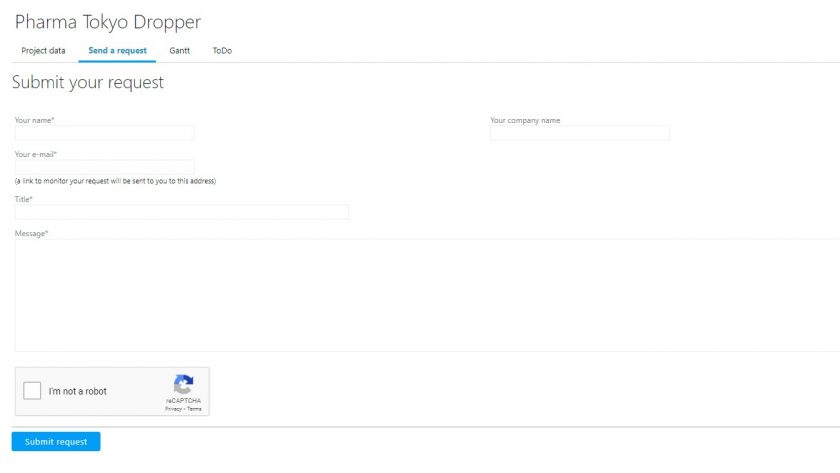Quality communication is paramount to managing client requests in your projects. This means: understanding who the client is, what they need from the project, how to set reasonable expectations, and establishing criteria for successful delivery.
CONTENT
Here are some tips that will help you establish and maintain a good working relationship with clients from the very beginning through project wrap-up.
Identify your client
In some projects, differentiating clients from other stakeholders can be challenging. So here’s a rule of thumb for how not to get it wrong:
The end client is the customer of goods or services produced by the project.
In other words, the customer is the recipient of the project results, which are referred to as the final deliverables.
A project customer can be either external or internal to the company and can be an organization, an individual, another department, etc.
Identify your client’s needs
The first step for any project should be a scope statement of some kind.
This statement is why the project began in the first place and is therefore the starting point for establishing all future requirements.
However, the scope statement by itself will not be enough to design the final output.
The scope statement must be expanded to a degree of detail sufficient to structure the project and guide work.
The path from the scope statement to the business requirements document, business specifications, or other documents that include more specific descriptions is where you need to apply project management skills to accurately capture the customer’s needs.
This is where you need to first identify the appropriate clients and stakeholders to provide the detailed requirements, and it is also where you need to also be able to establish your communication approach that will meet their need for project information.
The requirements collected during the project planning phase will set your budget and project plan.
The idea is very simple: customers fuel the engine of growth and are the primary reason any organization grows or survives.
If a customer is satisfied with the delivery of the product or service and how they are engaged, they will continue the partnership and/or advertise well.
If a customer is unhappy with the delivery of the product or service and the manner in which they were treated, they will directly or indirectly spread criticism and thus negatively impact current and future business.
Always engage your client
Your client doesn’t need to be shielded from bad news; so, it’s important to communicate any major project challenges as soon as you have all the information.
This doesn’t mean your client needs to be informed about every minor obstacle, but when it comes to major issues, it’s only fair that they get involved.
The project manager will need to use their common sense to know what issues clients should be aware of, but here’s a general rule of thumb: anything that could lead to a project delay, a budget overshoot, or a failure to meet requirements or initially specified quality should be communicated.
A good practice is to work with your team to identify potential corrective or preventive actions to present along with the problem.
The project manager should never report a deviation without taking corrective action, even if implementing it is beyond his or her capabilities.
Never ask the client for help unless you already know exactly what the client should do.
Also, inviting your client to group meetings, team-building exercises, award ceremonies, and so on is another way to keep them engaged.
The most useful thing would be to be able to use a project management tool that allows you, automatically, to share information with the customer in a transparent but controlled way. Twproject includes a public project page where the project manager can choose which information to share in an easy-to-read platform.
Getting client feedback
Client-focused project management requires the project manager to constantly engage and collaborate with all stakeholders involved in the project.
To benefit from this engagement, it is recommended to incorporate a feedback process throughout the project lifecycle.
In this way, concerns and issues can be identified and corrected early.
Also in this case Twproject public project page comes to your aid by providing a request form for the customer for receiving feedback. This feedback is collected within the project and then managed by the team.
Managing changes by your client
A project should have a change management plan that covers all aspects concerning any project changes.
This change management plan should inform the client how to go about requesting a change and how they will be informed of the next steps.
There are many valid reasons for a client to request a change in project requirements, such as a changing market, a change in the financial status of the organization, or a change requested by their own clients.
The client who sent the request should be able to provide as much information as possible about what they want to change and what their business case is.
Also, determining whether the request is within or beyond project scope is a key decision factor.
Defining what is reasonable and what is not should be included in the change management plan.
A project manager’s duty to the client is to turn their change request into practice, if possible, in a reasonable amount of time.
The analysis of the change request generates a cost estimate for implementing the change.
You should remember that you are working for your client; therefore, your goal should be to implement the change in the most cost-effective way possible.
Once a cost estimate has been calculated, the client can weigh the cost of the change against the expected benefits that will result from implementing the change.
Ultimately, stakeholders will need to make a logical, detailed, and informed decision.
It is important to remember that the answer could be no, especially if the requested change could result in major schedule delays, unacceptable cost overruns, or complete project failure.
Bottom line, it is important to keep in mind that clients of a project are people before they are clients.
Therefore, the project manager should deal with them in the same way they would want to be treated if they were in their shoes, and it is unlikely to prove to be the wrong approach.
Using a client-focused approach to project management requires maintaining a dialogue and understanding of what is important to project stakeholders.
With Twproject, this dialogue will be simpler and will require less work from the project manager. The information, collected and shared, will allow the customer to always be informed, when he decides, with the possibility of intervening when requested with targeted feedback.






